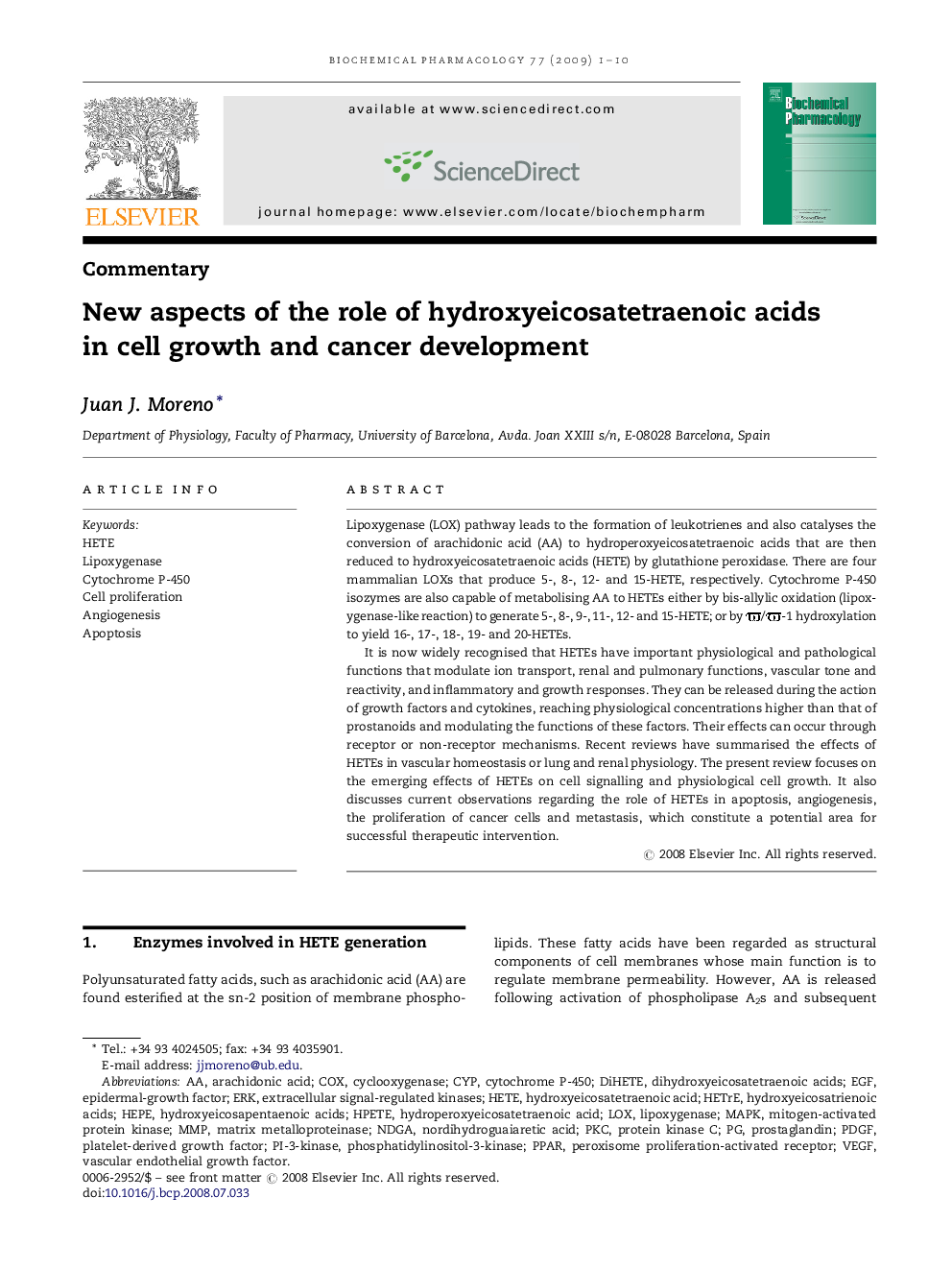| Article ID | Journal | Published Year | Pages | File Type |
|---|---|---|---|---|
| 2514069 | Biochemical Pharmacology | 2009 | 10 Pages |
Lipoxygenase (LOX) pathway leads to the formation of leukotrienes and also catalyses the conversion of arachidonic acid (AA) to hydroperoxyeicosatetraenoic acids that are then reduced to hydroxyeicosatetraenoic acids (HETE) by glutathione peroxidase. There are four mammalian LOXs that produce 5-, 8-, 12- and 15-HETE, respectively. Cytochrome P-450 isozymes are also capable of metabolising AA to HETEs either by bis-allylic oxidation (lipoxygenase-like reaction) to generate 5-, 8-, 9-, 11-, 12- and 15-HETE; or by ϖ/ϖ-1 hydroxylation to yield 16-, 17-, 18-, 19- and 20-HETEs.It is now widely recognised that HETEs have important physiological and pathological functions that modulate ion transport, renal and pulmonary functions, vascular tone and reactivity, and inflammatory and growth responses. They can be released during the action of growth factors and cytokines, reaching physiological concentrations higher than that of prostanoids and modulating the functions of these factors. Their effects can occur through receptor or non-receptor mechanisms. Recent reviews have summarised the effects of HETEs in vascular homeostasis or lung and renal physiology. The present review focuses on the emerging effects of HETEs on cell signalling and physiological cell growth. It also discusses current observations regarding the role of HETEs in apoptosis, angiogenesis, the proliferation of cancer cells and metastasis, which constitute a potential area for successful therapeutic intervention.
